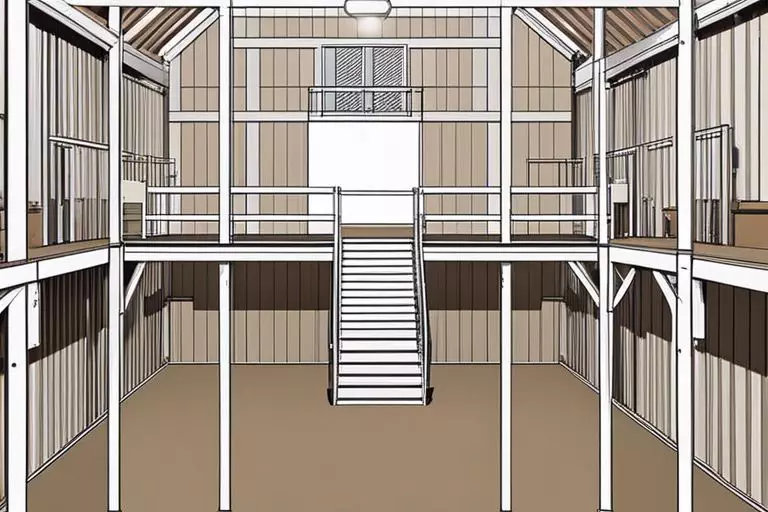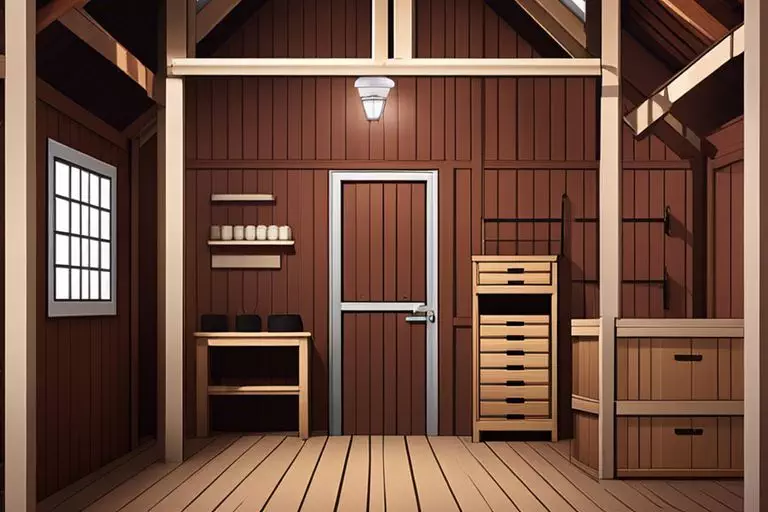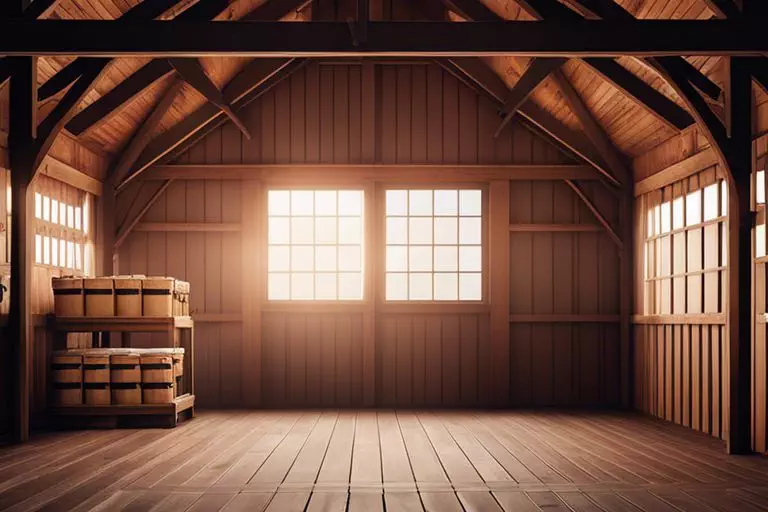A plan is crucial when designing a barn to ensure functionality and efficiency. A barn floor plan designer is a crucial tool that can help streamline the process of planning and creating the layout of a barn. From maximizing space utilization to enhancing workflow, a well-designed barn floor plan is key to a successful barn construction project. Let’s explore the importance and benefits of using a barn floor plan designer for your next agricultural endeavor.
Key Takeaways:
- Customization: Barn floor plan designers allow for the customization of barn layouts to fit specific needs and preferences.
- Efficiency: Designing a barn floor plan using specialized software can help optimize space usage and workflow efficiency.
- Visualization: These tools provide a visual representation of the barn layout, aiding in easier decision-making and planning.
- Cost-Effective: By accurately planning the barn layout, it can help avoid costly mistakes during construction or renovations.
- Collaboration: Designers can be shared with architects, builders, and other stakeholders to ensure everyone is on the same page with the barn’s design.

Understanding Barn Architecture
Some Design Your Barn Online | 3D Building App allow barn owners to create customized barn floor plans to suit their needs perfectly. Understanding barn architecture is crucial for designing a functional and efficient barn that meets the needs of both animals and owners alike.
Traditional vs. Modern Barn Design
Architecture plays a significant role in the design of barns, whether traditional or modern. Traditional barns often feature a simple, gable roof design with a central aisle for livestock housing. On the other hand, modern barns incorporate advanced technologies and materials to maximize efficiency and comfort for animals.
Essential Components of a Barn
For a barn to function effectively, certain necessary components must be incorporated into its design. These include sturdy framing, proper ventilation systems, adequate lighting, and durable flooring materials. These components are critical for maintaining the health and well-being of the animals housed in the barn.
Another necessary component of a barn is the layout. A well-thought-out layout can improve workflow efficiency and reduce the risk of accidents. Additionally, proper drainage systems are crucial to prevent flooding and maintain a clean environment for both animals and caretakers.
The Design Process
Even the most intricate barn floor plans start with a solid foundation. When designing a barn floor plan, it’s crucial to follow a structured process to ensure that the final design meets all the necessary requirements. Whether you’re a seasoned architect or a novice designer, having a systematic approach can make the process more manageable and efficient. One of the importants steps in the design process is evaluating needs and functionality.
Evaluating Needs and Functionality
An important aspect of designing a barn floor plan is evaluating the specific needs and functionality required for the space. Factors such as the intended use of the barn, the number of livestock or equipment it needs to accommodate, and the workflow within the space are crucial considerations. By understanding these needs upfront, designers can create a floor plan that maximizes efficiency and meets the user’s requirements.
Spatial Planning and Zoning
Spatial planning and zoning play a significant role in the design process of a barn floor plan. This step involves organizing the layout of the barn to optimize space utilization and adhere to zoning regulations. Designers must consider the placement of key components such as stalls, storage areas, and workspaces to create a functional and effective design that complies with local building codes.
Another critical aspect of spatial planning and zoning is ensuring proper ventilation and natural light within the barn. These elements not only enhance the comfort of the animals and workers but also contribute to the overall well-being of the barn structure. Proper ventilation is important for maintaining air quality and reducing the risk of respiratory issues among livestock. Adequate natural light can also improve the mood and health of the animals, creating a more productive and sustainable environment.

Integrating Technology and Sustainability
Smart Barn Features
Your barn floor plan designer can now incorporate smart barn features that enhance efficiency and convenience. An automated ventilation system, smart lighting, and temperature control can be integrated to optimize the environment for livestock health and productivity.
Eco-Friendly Design Principles
An eco-friendly barn design focuses on minimizing waste and reducing energy consumption. Technology like solar panels, rainwater harvesting systems, and natural lighting solutions can be incorporated into the barn floor plan to make it more sustainable. The integration of these elements not only reduces the environmental footprint of the barn but also lowers operating costs in the long run.
Technology has revolutionized the way barns are designed and operated. With the use of eco-friendly materials, energy-efficient systems, and smart features, barns can now be more sustainable and cost-effective. These innovations not only benefit the environment but also improve the overall functionality and efficiency of the barn.
Practical Considerations
Materials and Durability
All barn floor plans should consider the materials used and their durability. For a barn to withstand the test of time and various weather conditions, it is crucial to invest in high-quality materials such as pressure-treated wood for the flooring. This ensures longevity and reduces the chances of rot or decay, ultimately saving you money in the long run.
Regulatory Compliance and Safety Standards
Durability and safety go hand in hand when designing a barn floor plan. For instance, ensuring compliance with local building codes and safety standards is non-negotiable. The floor plan must adhere to regulations to guarantee the safety of both livestock and workers. Providing proper ventilation, non-slip surfaces, and sufficient lighting are key components to meet these standards and ensure a secure environment within the barn.
Summing up
Upon reflecting on the intricacies of barn floor plan design, one can appreciate the importance of functionality, aesthetics, and practicality in creating a space that meets the needs of both humans and animals. A barn floor plan designer plays a crucial role in balancing these elements to ensure a well-organized and efficient layout that caters to the unique requirements of each barn. By harnessing their expertise and creativity, barn floor plan designers can bring to life spaces that not only serve their purpose but also enhance the overall appeal and functionality of a barn.
FAQ
Q: What is a barn floor plan designer?
A: A barn floor plan designer is a tool or software that helps individuals or professionals create, customize, and visualize floor plans for barns and other agricultural structures.
Q: How can a barn floor plan designer be useful?
A: A barn floor plan designer can be useful for planning the layout of stalls, storage areas, feed rooms, and other imperative components of a barn. It can also help optimize space, improve workflow, and ensure efficient use of resources.
Q: What features should I look for in a barn floor plan designer?
A: When choosing a barn floor plan designer, look for features such as drag-and-drop functionality, customizable templates, measurement tools, 3D rendering capabilities, and the ability to export or share plans.
Q: Can a barn floor plan designer help with obtaining permits or approval?
A: While a barn floor plan designer can assist in creating detailed plans for your barn structure, obtaining permits or approval is typically a separate process that may require additional documentation or professional assistance.
Q: Are there free barn floor plan designer tools available?
A: Yes, there are free barn floor plan designer tools available online that offer basic functionalities for designing barn floor plans. However, for more advanced features and customization options, you may need to invest in paid software or services.

1 thought on “barn floor plan designer”